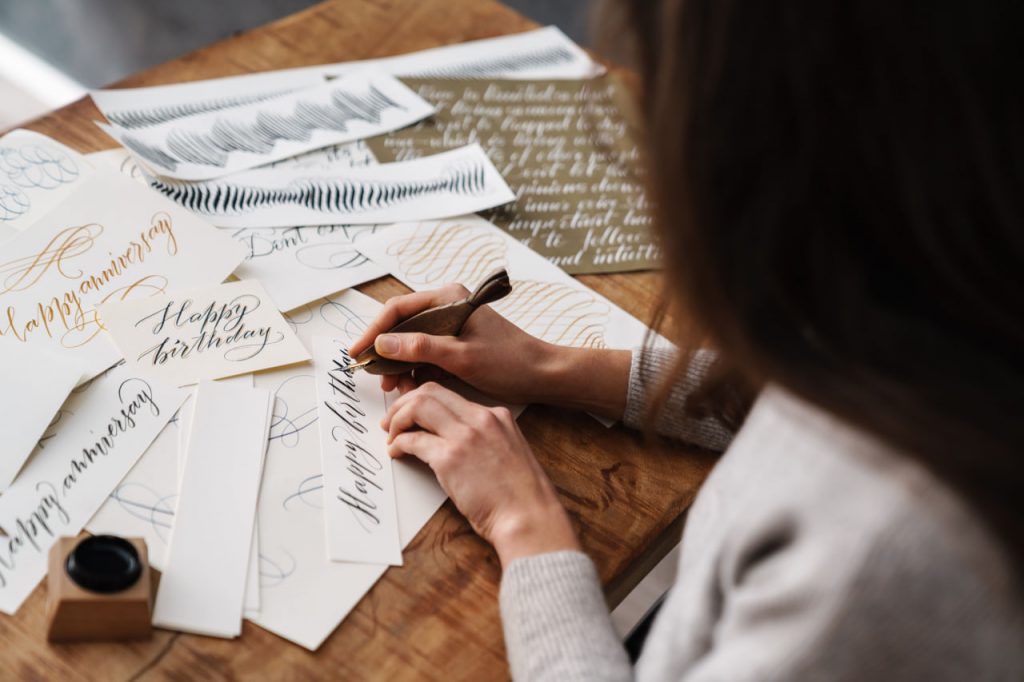Calligraphy is more than just writing—it is a form of artistic expression that has been cherished for centuries. From historical manuscripts to modern-day wedding invitations, calligraphy brings elegance, personality, and creativity to the written word. Whether you’re a beginner or an experienced artist, understanding the beauty and impact of calligraphy can inspire you to explore new creative possibilities.
Why Calligraphy is More Than Just Writing
In a digital world where typing has replaced handwriting, calligraphy stands out as a unique and personal art form. Each stroke, curve, and flourish reflects the artist’s emotions and style. Calligraphy allows you to slow down, focus, and create something meaningful—whether it’s a simple quote or an elaborate design.
Beyond aesthetics, calligraphy also has psychological benefits:
- Mindfulness & Relaxation: The rhythmic movement of pen on paper helps reduce stress and improve concentration.
- Personal Expression: Unlike standard fonts, handwritten lettering adds a personal touch to everything from greeting cards to business logos.
- Timeless Appeal: Calligraphy bridges the gap between tradition and modernity, making it a skill that remains relevant in any era.
Exploring Different Calligraphy Styles
Calligraphy is incredibly diverse, with different styles that can match any artistic vision. Here are some popular ones:
- Classic Script Calligraphy: Elegant and formal, this style is often used for invitations and certificates.
- Modern Calligraphy: A more relaxed and free-flowing style, perfect for creative projects and personal branding.
- Gothic & Blackletter: Bold and dramatic, these styles are inspired by medieval scripts and are often used for artistic typography.
- Brush Calligraphy: A dynamic, expressive style using brush pens or paintbrushes to create fluid, organic strokes.
By experimenting with different styles, you can find the one that best fits your personality and artistic goals.
The Role of Calligraphy in Today’s Creative World
Calligraphy has found new life in modern design, playing a key role in:
- Branding & Logos: Many companies incorporate hand-lettered typography for a unique and authentic look.
- Event Stationery: Weddings, parties, and corporate events often feature custom calligraphy on invitations, place cards, and signage.
- Home Decor & Art Prints: Personalized wall art and motivational quotes written in calligraphy add a sophisticated touch to interiors.
- Social Media & Digital Art: Many artists use calligraphy to create eye-catching Instagram posts, digital illustrations, and even animations.
Whether used traditionally with ink on paper or digitally with a stylus and tablet, calligraphy continues to evolve and inspire.
How to Get Started with Calligraphy
If you’re ready to dive into the world of calligraphy, here are some simple steps to begin your journey:
- Gather Your Tools: Choose a beginner-friendly brush pen or dip pen and high-quality smooth paper.
- Learn the Basics: Start with simple strokes and practice consistency in letter shapes.
- Follow Guides & Tutorials: Many online courses and books can help you develop your technique.
- Experiment & Have Fun: Don’t be afraid to create your own style and personalize your work.
Final Thoughts
Calligraphy is a powerful artistic skill that transforms simple letters into meaningful art. Whether you want to create beautiful handwritten notes or start a lettering business, this timeless craft offers endless opportunities for creativity. Pick up a pen, start practicing, and discover the magic of calligraphy for yourself!
